Mianyang Qiangcheng Tourist Area, also known as Beichuan Qiangcheng Tourist Area, is located in Beichuan Qiang Autonomous County in the northwest of the Sichuan Basin. Composed of scenic spots including the Beichuan Earthquake Ruins Area, the new county seat of Beichuan, the Beichuan Earthquake Memorial Hall, the Beichuan Qiang Folk Custom Museum, Jina Qiang Village, and the Vester Tourist Center, the tourist area covers a total area of 6.01 square kilometers. It is the 6th national 5A-level tourist attraction in Sichuan Province and the first one in Mianyang City. Consisting of three major parts - the earthquake memorial site, the Great Love Culture Scenic Area, and the Yu-Qiang Culture Experience Area, it boasts a complete range of resource types and abundant individual attractions.
History and Culture
Beichuan is the only Qiang Autonomous County in China. For thousands of years, the ancient Qiang people have lived and multiplied here together with 17 other ethnic groups including the Han, Tibetan, and Hui, forming a simple and profound folk culture. Beichuan has a long history: during the Xia and Shang dynasties, the county was part of the Liangzhou region; in the Zhou Dynasty, it belonged to the territory of the Ranmang Tribe and was subordinate to the Shu State. After the changes of various dynasties, in the 4th year of Baoding during the reign of Emperor Wu of the Northern Zhou Dynasty (564 AD), the name of Shengzhou was changed to Wenzhou; in the 1st year of Tianhe (566 AD), Beichuan County was newly established in the Northern County, marking the beginning of the establishment of Beichuan as a county.
At 14:28 on May 12, 2008, an 8.0-magnitude earthquake occurred in Wenchuan County, Sichuan Province. Beichuan County, which is adjacent to Wenchuan, suffered severe damage, with a large number of houses collapsing. As one of the hardest-hit areas by the "5·12" Wenchuan Earthquake, 15,645 people in Beichuan were killed and 1,023 went missing - among every 4 victims of the Wenchuan Earthquake, one was from Beichuan. The direct economic loss of the whole county reached 58.57 billion yuan. After the earthquake, with the care of the people across the country and compatriots at home and abroad, Beichuan embarked on the road of earthquake relief and post-disaster reconstruction.
Major Scenic Spots
Beichuan Earthquake Ruins Area
The earthquake ruins of the old county seat are the most well-preserved and largest-scale earthquake ruins in the world today. As a precious heritage left by the "5·12" earthquake disaster to the world, they truly preserve the scene after the earthquake, allowing people to intuitively feel the huge destructive power of the earthquake.
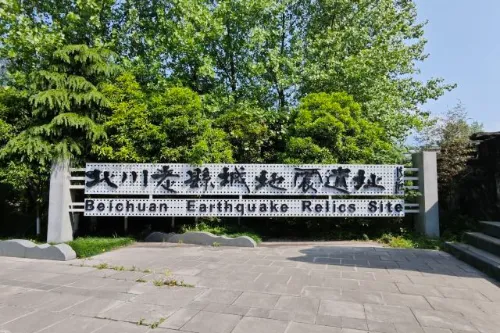
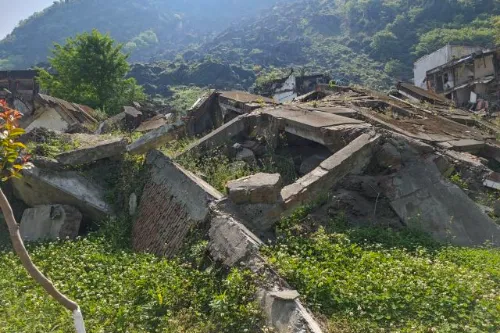
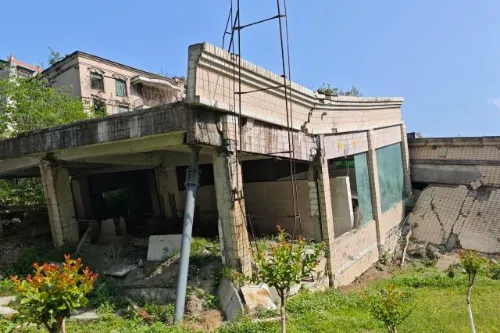
"5·12" Wenchuan Earthquake Memorial Hall
This memorial hall is a national patriotism education base, a national red tourism classic scenic spot, a national science popularization education base, and a national social science popularization base. Through rich exhibits, scene restoration, multimedia displays and other methods, it comprehensively showcases the disaster process of the "5·12" Wenchuan Earthquake, the heroic deeds of earthquake relief, and the great achievements of post-disaster reconstruction.
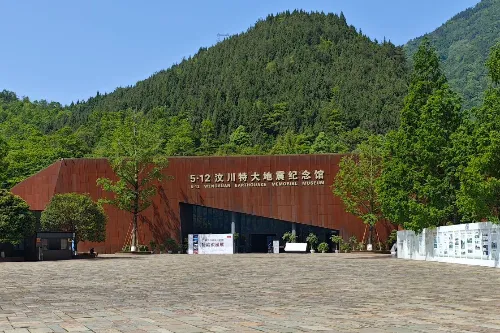
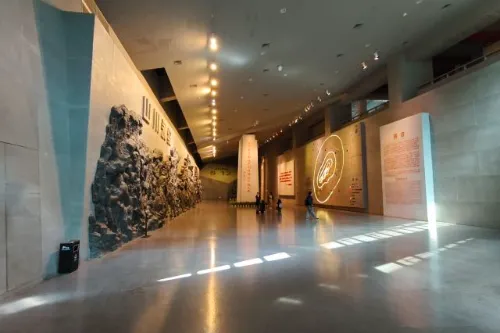
Beichuan Qiang Folk Custom Museum
The museum collects and displays a large number of cultural relics and materials related to the history, culture, and folk customs of the Qiang people, covering various aspects such as the production and life, religious beliefs, and art and craftsmanship of the Qiang people. It is an important place for understanding and studying Qiang culture.
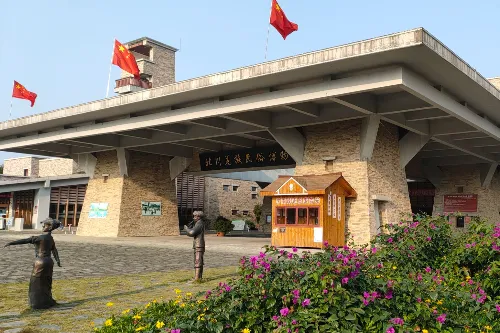
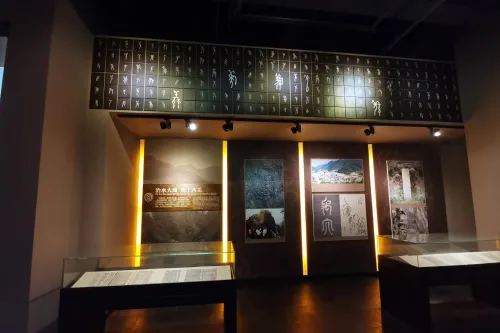
Jina Qiang Village
Located in Leigu Town, Beichuan County, Mianyang City, Sichuan Province, it is a must-pass route between the new and old county seats of Beichuan and is known as "the First Village of Beichuan". Tall watchtowers stand tall, and the Qiang village is built against the mountains and beside the water. The houses are made of stone blocks, forming a beautiful and striking scenery between the green mountains and clear waters.

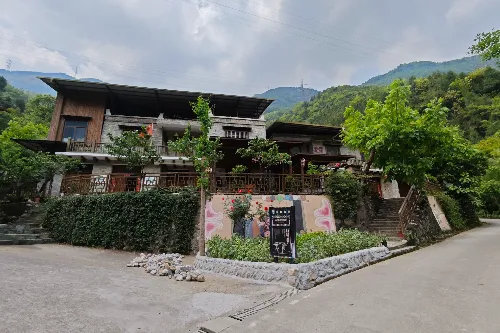
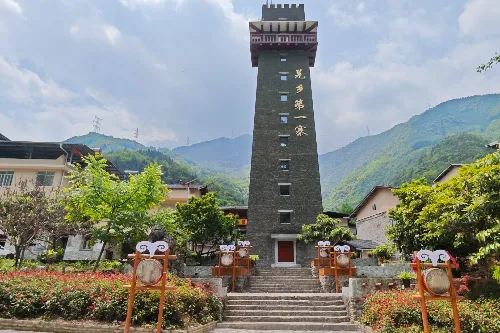
Banacha Commercial Street
Located on the central axis of the new county seat of Beichuan, it is adjacent to Yongchang Avenue in the west, Juda Road in the east, Hongyan Street in the north, and Baiyang Street in the south. Filled with Qiang ethnic characteristics, there are many shops here selling featured food, handcrafted products, etc. Tourists can experience Qiang customs and buy souvenirs here.

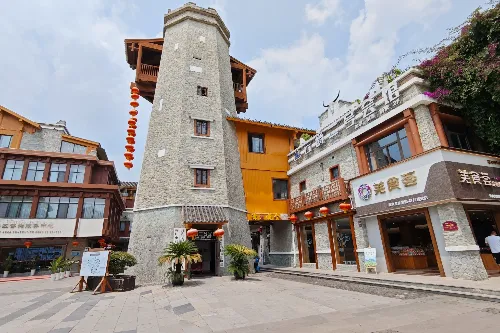
Tour Routes
One-day Tour: Tourist Center → Earthquake Ruins of the Old County Seat → "5·12" Wenchuan Earthquake Memorial Hall → Science Popularization Experience Hall → Banacha Commercial Street. This route allows tourists to quickly understand the history related to the earthquake and experience Qiang customs.
Two-day Tour: On the first day, visit the Tourist Center → Earthquake Ruins of the Old County Seat → "5·12" Wenchuan Earthquake Memorial Hall → Tangjiashan Barrier Lake; on the second day, visit the Qiang Folk Custom Museum → Xingfu Hall → Earthquake Relief Memorial Park → Banacha Commercial Street → Yuwang Bridge → Central Axis Scenic Belt of the New County Seat. Two days allow tourists to have a deeper understanding of the memorial significance and cultural connotation of the scenic area.
Travel Tips
- Reserve tickets for the "5·12" Wenchuan Earthquake Memorial Hall in advance through official channels to avoid delaying your trip.
- Keep quiet when visiting the earthquake ruins and the memorial hall, and show respect for history and the victims.
- When visiting Qiang villages, you can participate in Qiang folk activities such as the Guozhuang Dance to better experience Qiang culture.
- When tasting local food, you can choose the spiciness level according to your personal taste and try different featured dishes.
Notes
- Some areas in the scenic area are for ruins protection; do not touch or climb at will.
- Keep your personal belongings safe, especially in crowded places such as commercial streets.
- Follow the scenic area's signposts and the guidance of staff for a safe visit.
- Respect the local customs and religious beliefs, especially in areas like Qiang villages.
- In case of bad weather, pay attention to your personal safety and adjust your itinerary in advance if necessary.
Transportation
- By Air:
- Chengdu Shuangliu International Airport: Take a bus to Chengdu Zhaojue Temple Bus Station, then take a passenger bus from Chengdu Zhaojue Temple Bus Station to Mianyang General Bus Station (one bus every 15 minutes); then transfer to a passenger bus from Mianyang General Bus Station to Beichuan (one bus every 10 minutes).
- Mianyang Nanjiao Airport: Take a bus to Mianyang General Bus Station, then transfer to a passenger bus from Mianyang General Bus Station to Beichuan (one bus every 10 minutes).
- By Train: After getting off at Mianyang Railway Station, cross the street to reach Mianyang General Bus Station, then take a passenger bus from Mianyang General Bus Station to Beichuan (one bus every 10 minutes).
- By Bus: Take a passenger bus from Mianyang General Bus Station to Beichuan (one bus every 10 minutes).
- By Self-driving:
- From Chengdu or Deyang: Take Chengdu-Mianyang Expressway or Chengdu-Mianyang Expressway Branch Line → Mianyang South (Mojia) Toll Station → Liaoning Avenue → Tourist Center.
- From Chongqing or Nanchong: Take Mianyang-Suining Expressway → Mianyang Xinqiao Toll Station → Jiuzhou Avenue → Mianyang-Anxian-Beichuan Expressway → Liaoning Avenue → Tourist Center.
- From Xi'an or Guangyuan: Take Mianyang-Guangyuan Expressway → Mianyang Toll Station → Mianyang-Anxian-Beichuan Expressway → Liaoning Avenue → Tourist Center.
Opening Hours
Beichuan Qiangcheng Tourist Area is an open scenic area with no specific closing time. However, the "5·12" Wenchuan Earthquake Memorial Hall is open from 09:00 to 17:00 (admission stops at 16:30) from Tuesday to Sunday every week, and is closed on Mondays for maintenance (it will not be closed on Mondays that fall on legal holidays or May 12). The Beichuan Qiang Folk Custom Museum is generally open from 09:00 to 17:00, and the specific opening hours are subject to the actual arrangement of the scenic area.
Tickets
All scenic spots in Beichuan Qiangcheng Tourist Area are public welfare and open to tourists free of charge. However, the "5·12" Wenchuan Earthquake Memorial Hall implements a "free admission with ticket" policy. Tourists who have successfully reserved tickets can enter by swiping their ID cards at the ID card verification channel.


